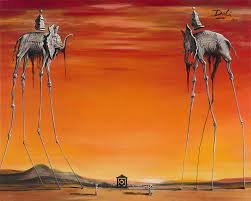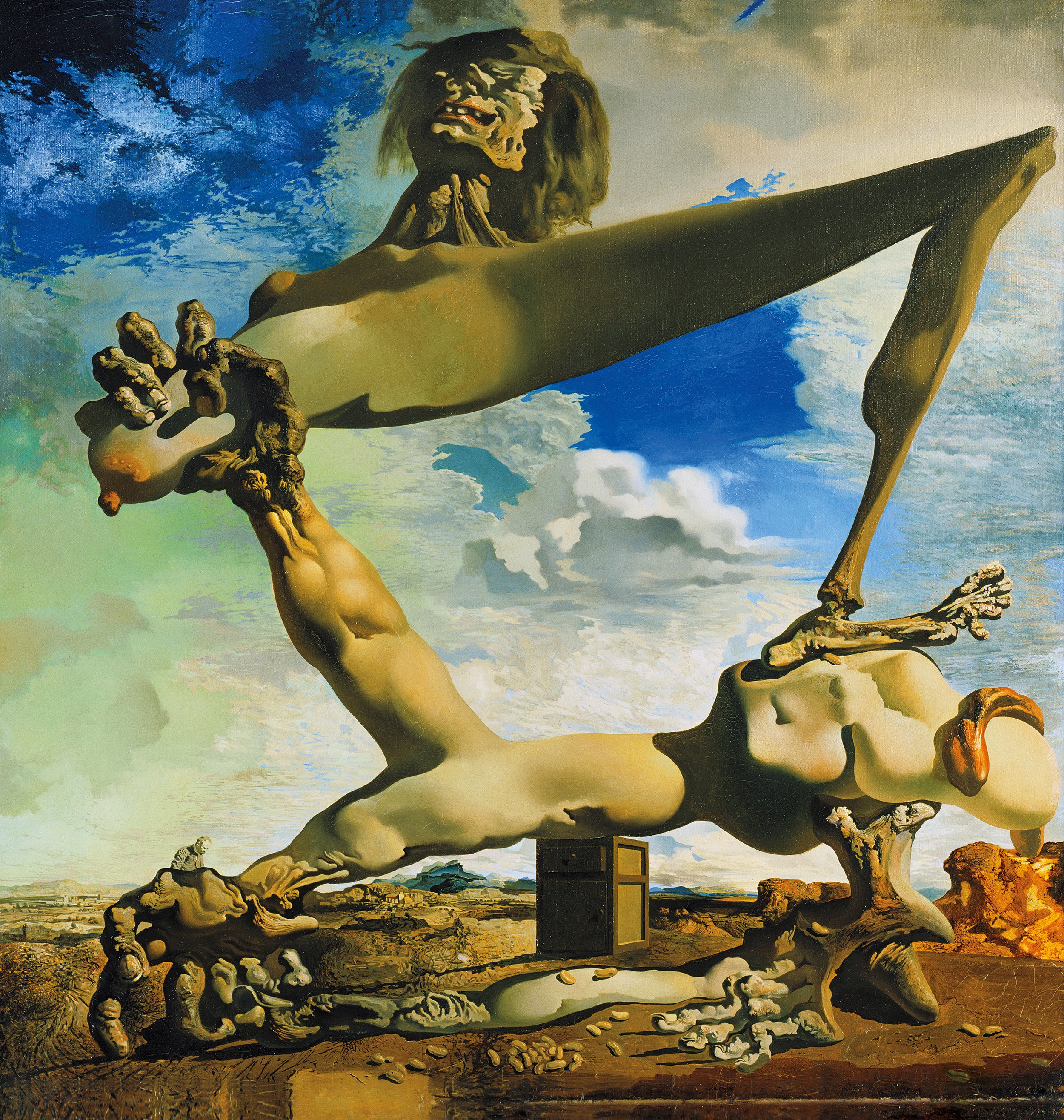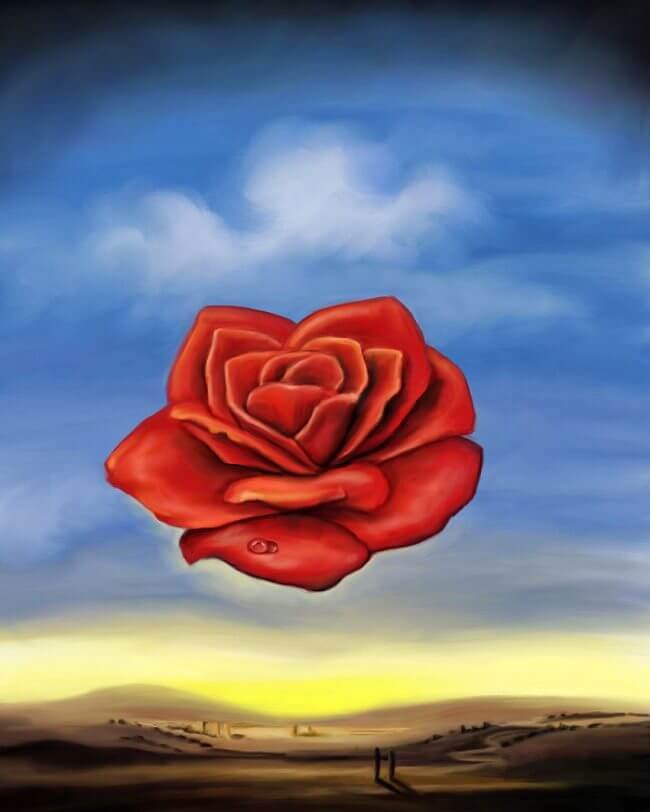Desierto de Dalí
for saxophone quartet (SATB) (2023)
Duration: 12:00 (Elephants, 4:30; Soft Construction, 2:30; Meditative Rose, 5:00)
Desierto de Dalí uncovers the lifelong work of Salvador Dalí, a leading figure of the surrealism movement. This composition prioritizes his renowned desert paintings, influenced by the alien landscapes of South America’s Atacama Desert. Over the last year, I’ve had the opportunity to visit both his former home in Figueres, Spain and the heart of the Atacama, San Pedro de Atacama, Chile. This composition attempts to encapsulate the feeling of isolation paired with the hallucinogenic nature of Dalí’s creations.
This piece utilizes a storyline, one where the audience follows a path through the desert. Along the way, we encounter various figures from Dalí’s paintings. Each movement (named after the figure’s original painting) showcases our varying interactions together as we continue on our peculiar journey.
1. The Elephants: We find ourselves among the Elephants, a group of towering creatures with obelisks atop them. They serve as the guardians of Dalí’s Desert, beckoning us in with a mysterious, repetitive musical figure that lures us forward. Their legs seem frail, unable to carry its own weight so high in the air. We find this as our introduction to Dalí’s redefined laws of nature.
2. Self-Construction with Boiled Beans: We next encounter a strange figure that resembles a dismembered and reconstructed human. The creature appears to be wrestling with itself. We make ourselves known and the monster begins to tell us a story. This story is filled with harm, destruction, sadness, and anger. It then asks us a question and we stumble for an answer, unable to decipher the creature’s schizophrenic story. An argument ensues and we try to pass, finally saying the right things and understanding his tale.
3. Meditative Rose: The title flower floats high above us, luring us closer with the pigmented colors of the petals and delicate movement from the high-altitude wind. We’re stuck in this pensive state, both reflecting on where we’ve come from and preparing for what’s ahead. Time seems to waver in the presence of the rose, as much of the movement is counted with seconds rather than a meter and pulse. The air lies still as a haunting melody (based on Dies Irae) fills the soundless desert.



